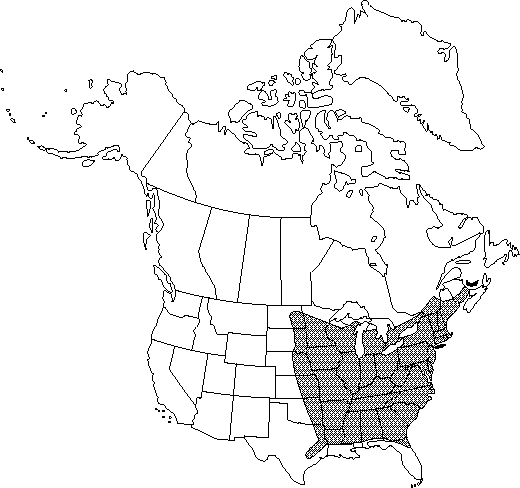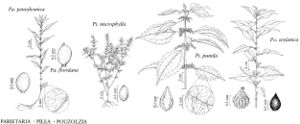Difference between revisions of "Pilea pumila"
Manual, 437. 1848.
FNA>Volume Importer |
FNA>Volume Importer |
||
| Line 10: | Line 10: | ||
|special_status={{Treatment/ID/Special_status | |special_status={{Treatment/ID/Special_status | ||
|code=F | |code=F | ||
| − | |label= | + | |label=Illustrated |
}}{{Treatment/ID/Special_status | }}{{Treatment/ID/Special_status | ||
|code=W | |code=W | ||
| Line 18: | Line 18: | ||
|name=Urtica pumila | |name=Urtica pumila | ||
|authority=Linnaeus | |authority=Linnaeus | ||
| + | |rank=species | ||
|publication_title=Sp. Pl. | |publication_title=Sp. Pl. | ||
|publication_place=2: 984. 1753 | |publication_place=2: 984. 1753 | ||
| Line 36: | Line 37: | ||
|elevation=0-2000 m | |elevation=0-2000 m | ||
|distribution=N.B.;Ont.;P.E.I.;Que.;Ala.;Ark.;Conn.;Del.;D.C.;Fla.;Ga.;Ill.;Ind.;Iowa;Kans.;Ky.;La.;Maine;Md.;Mass.;Mich.;Minn.;Miss.;Mo.;Nebr.;N.H.;N.J.;N.Y.;N.C.;N.Dak.;Ohio;Okla.;Pa.;R.I.;S.C.;S.Dak.;Tenn.;Tex.;Vt.;Va.;W.Va.;Wis.;Asia. | |distribution=N.B.;Ont.;P.E.I.;Que.;Ala.;Ark.;Conn.;Del.;D.C.;Fla.;Ga.;Ill.;Ind.;Iowa;Kans.;Ky.;La.;Maine;Md.;Mass.;Mich.;Minn.;Miss.;Mo.;Nebr.;N.H.;N.J.;N.Y.;N.C.;N.Dak.;Ohio;Okla.;Pa.;R.I.;S.C.;S.Dak.;Tenn.;Tex.;Vt.;Va.;W.Va.;Wis.;Asia. | ||
| − | |discussion=<p>Typical plants have leaf blades with cuneate bases and 3-11 rounded teeth on each margin; plants with rounded leaf bases and 11-17 less rounded or acute teeth on each margin have been called <i>Pilea pumila</i> < | + | |discussion=<p>Typical plants have leaf blades with cuneate bases and 3-11 rounded teeth on each margin; plants with rounded leaf bases and 11-17 less rounded or acute teeth on each margin have been called <i>Pilea pumila</i> <i></i>var.<i> deamii</i> (Lunell) Fernald (M. L. Fernald 1936) [Adicea deamii Lunell, Amer. Midl. Naturalist 3: 10. 1913.]. Typical <i>P. pumila</i> also is found in eastern Asia, where three infraspecific taxa, <i>P. pumila </i>var.<i> pumila</i>, <i>P. pumila</i> var. hamaoi (Makino) C. J. Chen, and <i>P. pumila</i> var. obtusifolia C. J. Chen are recognized. This complex, which also includes <i>P. pauciflora</i> C. J. Chen, has been placed in <i>Pilea</i> series Pumilae C. J. Chen. Although the Asian plants are often vegetatively and florally indistinguishable from the North American plants, minor differences do occur in the achenes, especially in their markings and sculpturing when mature. Detailed studies are needed to clarify exact relationships.</p><!-- |
--><p>Native Americans used <i>Pilea pumila</i> medicinally to alleviate itching, to cure sinus problems, and to treat excessive hunger (D. E. Moerman 1986)</p> | --><p>Native Americans used <i>Pilea pumila</i> medicinally to alleviate itching, to cure sinus problems, and to treat excessive hunger (D. E. Moerman 1986)</p> | ||
|tables= | |tables= | ||
| Line 46: | Line 47: | ||
-->{{#Taxon: | -->{{#Taxon: | ||
name=Pilea pumila | name=Pilea pumila | ||
| − | |||
|authority=(Linnaeus) A. Gray | |authority=(Linnaeus) A. Gray | ||
|rank=species | |rank=species | ||
| Line 60: | Line 60: | ||
|publication title=Manual, | |publication title=Manual, | ||
|publication year=1848 | |publication year=1848 | ||
| − | |special status= | + | |special status=Illustrated;Weedy |
| − | |source xml=https://jpend@bitbucket.org/aafc-mbb/fna-data-curation.git/src/ | + | |source xml=https://jpend@bitbucket.org/aafc-mbb/fna-data-curation.git/src/f50eec43f223ca0e34566be0b046453a0960e173/coarse_grained_fna_xml/V3/V3_965.xml |
|genus=Pilea | |genus=Pilea | ||
|species=Pilea pumila | |species=Pilea pumila | ||
Revision as of 21:32, 16 December 2019
Herbs, 0.7-7 dm. Stems simple, erect. Leaf blades elliptic to broadly elliptic or ovate, paired blades equal, 2-13 × 1-9 cm, margins dentate. Inflorescences crowded to lax. Flowers ca. 1 mm across. Achenes uniformly light colored or with streaks of purple, compressed, teardrop-shaped, 1.3-1.7 × 0.6-1.1 mm, smooth or purple striations sometimes raised. 2n = 24, 26.
Phenology: Flowering summer–fall.
Habitat: Moist to wet woods, woodland margins, along streams, shaded waste places
Elevation: 0-2000 m
Distribution

N.B., Ont., P.E.I., Que., Ala., Ark., Conn., Del., D.C., Fla., Ga., Ill., Ind., Iowa, Kans., Ky., La., Maine, Md., Mass., Mich., Minn., Miss., Mo., Nebr., N.H., N.J., N.Y., N.C., N.Dak., Ohio, Okla., Pa., R.I., S.C., S.Dak., Tenn., Tex., Vt., Va., W.Va., Wis., Asia.
Discussion
Typical plants have leaf blades with cuneate bases and 3-11 rounded teeth on each margin; plants with rounded leaf bases and 11-17 less rounded or acute teeth on each margin have been called Pilea pumila var. deamii (Lunell) Fernald (M. L. Fernald 1936) [Adicea deamii Lunell, Amer. Midl. Naturalist 3: 10. 1913.]. Typical P. pumila also is found in eastern Asia, where three infraspecific taxa, P. pumila var. pumila, P. pumila var. hamaoi (Makino) C. J. Chen, and P. pumila var. obtusifolia C. J. Chen are recognized. This complex, which also includes P. pauciflora C. J. Chen, has been placed in Pilea series Pumilae C. J. Chen. Although the Asian plants are often vegetatively and florally indistinguishable from the North American plants, minor differences do occur in the achenes, especially in their markings and sculpturing when mature. Detailed studies are needed to clarify exact relationships.
Native Americans used Pilea pumila medicinally to alleviate itching, to cure sinus problems, and to treat excessive hunger (D. E. Moerman 1986)
Selected References
None.
